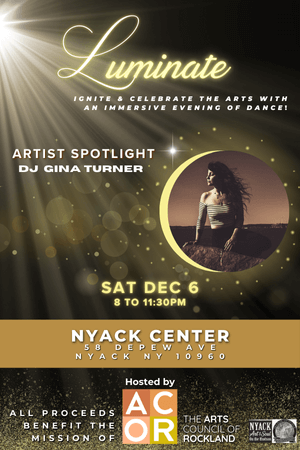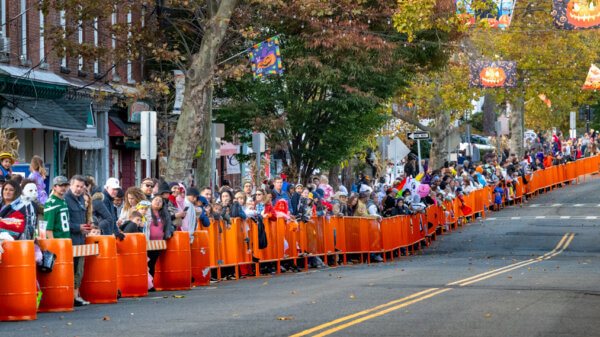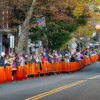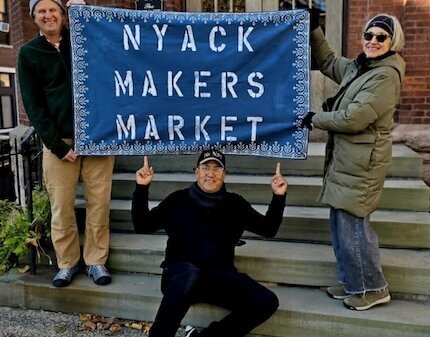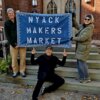On a warm Saturday night in August 1893, seventy-five people gathered at the popular Victorian boarding house run by Isaac and Elizabeth Lydecker on Fourth Avenue in Nyack to witness the formal naming of the house.
The chosen name, Ivanhoe, came from the Sir Walter Scott novel evoking chivalry and honor. Local lore claims that three U.S. presidents—Garfield, Cleveland, and McKinley—once stayed at the Ivanhoe while attending services at the Baptist Church across the street. However, only Cleveland’s visit to Nyack is firmly documented.
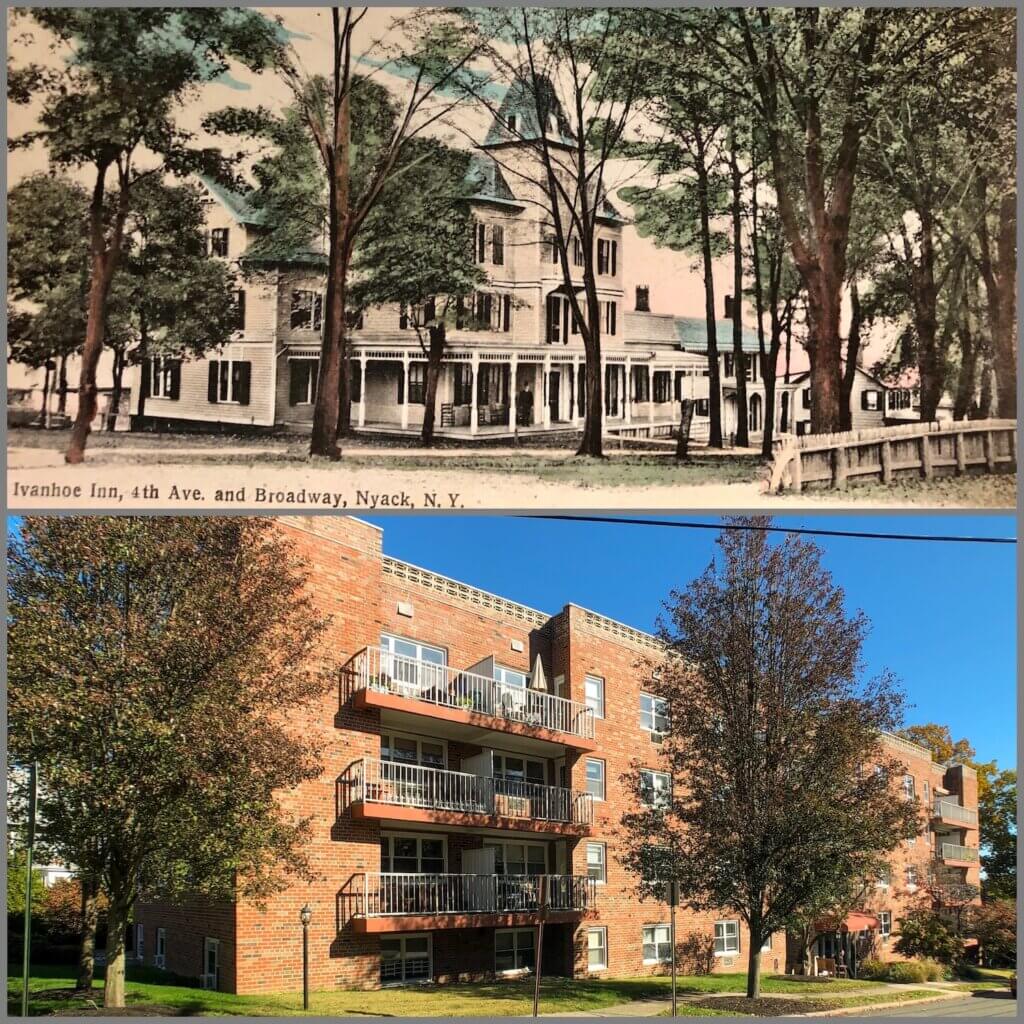
The Ivanhoe name survived changing times and changing buildings. When the original Victorian resort hotel was replaced during Nyack’s 1960s apartment boom, the new 46-unit brick building kept the name to honor its predecessor.
The Lydeckers – Ivanhoe Owners
Isaac S. and Elizabeth Lydecker opened a boarding house around 1890 in a large home facing Fourth Avenue in the irregularly spaced block bounded by Broadway and Ackerman Place. The 1890s were the heyday of Nyack’s summer hotels, and the Lydeckers’ boarding house quickly became popular — thanks as much to its hospitable innkeepers as to its comfortable surroundings amid shades trees on Fourth Avenue.
Isaac, the son of James Lydecker, a wealthy West Nyack farmer, once ran a milk business in Nyack. Both father and son raised some of Rockland County’s finest racehorses. In 1892, the Lydeckers expanded their boarding house by connecting another building on the property and adding a quaint winding stairway — improvements that inspired the naming party.
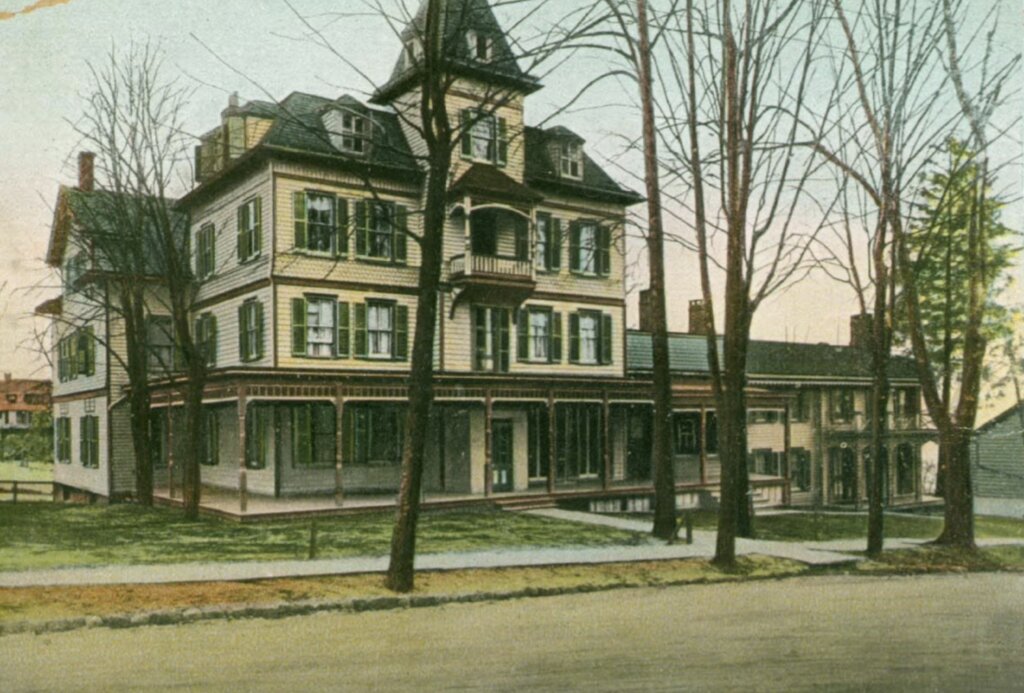
Unfortunately, Isaac Lydecker died suddenly in February 1895 at age fifty. After returning from Mount Moor (then West Nyack) in his sleigh, he collapsed while unhitching his horses. When a servant returned with warm water for the animals, he found Isaac unconscious on the ground. Elizabeth carried on running the Ivanhoe for many years after his death.
Guests
Many of the Lydeckers’ guests returned year after year. Some commuted to New York City offices via the Northern Railroad or the steamer Chrystenah. Each morning, Isaac hitched up his surrey for errands around town while Elizabeth accompanied him for supplies.
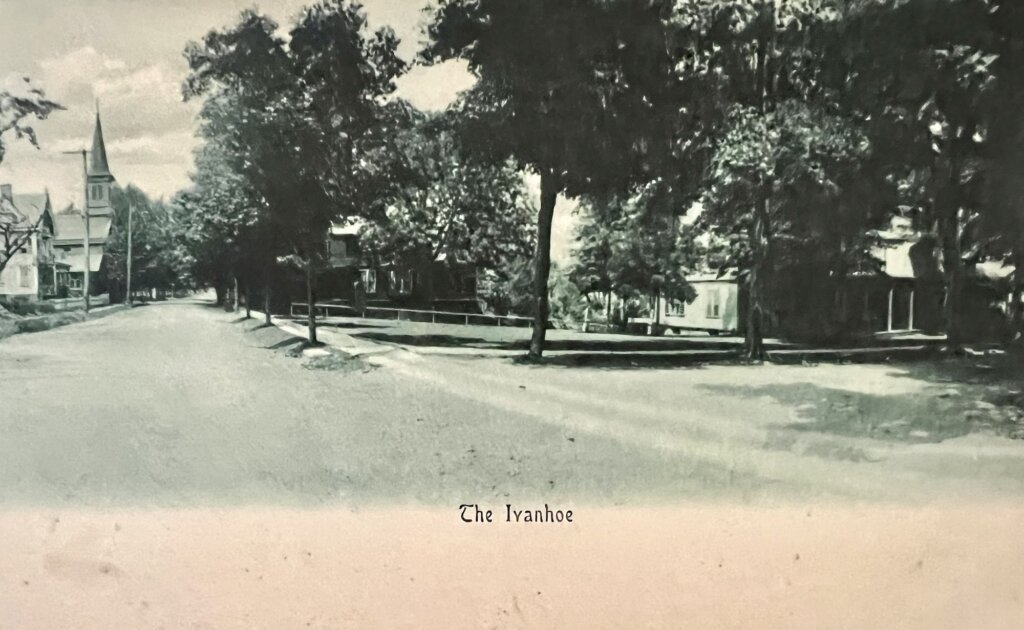
Newspaper society columns often mentioned visiting guests:
“Mrs. J. W. Catchpole and children of New York City are at the Ivanhoe.”
Rockland County Journal ,August 1903
Most early guests were well-to-do city residents escaping summer heat, spending their days on wide verandas or taking leisurely walks and carriage drives around Nyack.
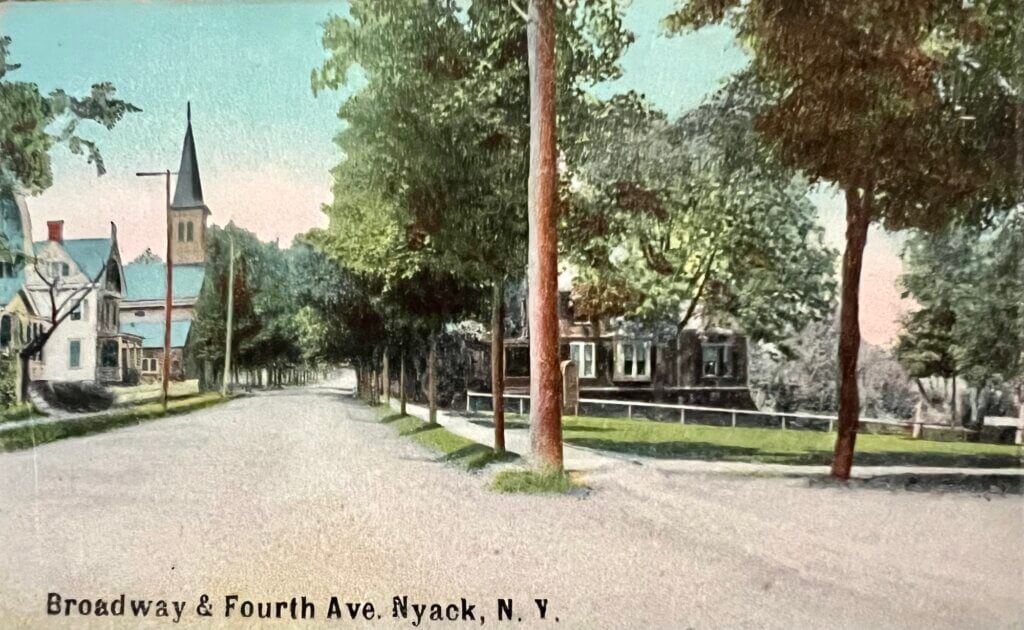
“The grounds were kept in beautiful shape. It was a lovely place.”
Raymond Ackerman
The Naming Party
Fifty boarders and twenty-five guests assembled for the naming party on that summer night in 1893. Each person was asked to suggest a name for the newly expanded hotel. A committee of three women chose from the list and, after a few minutes of deliberation, returned with their decision: Ivanhoe.
“Three hearty cheers were given for the house and its genial host and hostess.”
kland County Journal
The evening continued with entertainment by the Hayden Quartet and solos by Edgar and Harry Blauvelt, both Nyack residents. After the music, refreshments flowed freely on the lantern-lit lawn decorated with Japanese lanterns — a fitting celebration for the birth of one of Nyack’s most charming hotels.
A few days later, a lawn mower inscribed the word Ivanhoe in the grass in letters eight feet high.
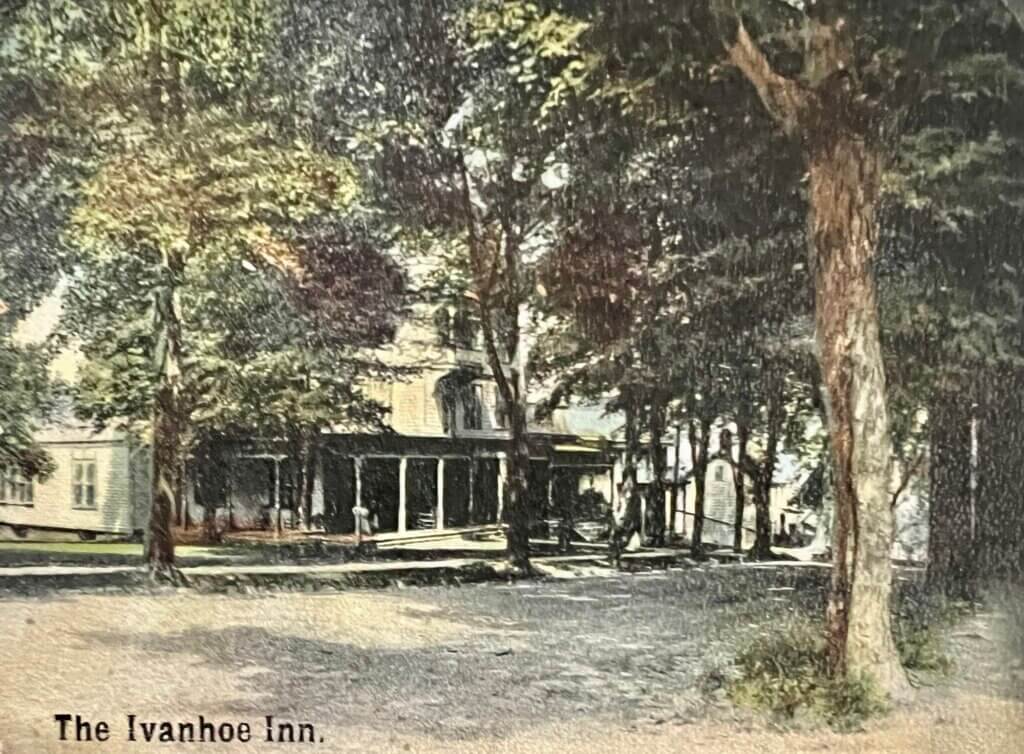
The Boarding House and the Dancing Schools
As Nyack’s summer resort business faded, the Ivanhoe transitioned into a year-round boarding house that served meals and rented rooms. From its earliest days, it also hosted dancing schools.
In 1896, Miss Gillespie held a masquerade party at the Ivanhoe for her dancing class, with piano accompaniment and supper at midnight. The party broke up at 1:30 a.m., marking the end of another lively evening.
After World War I, new management advertised “large airy rooms, excellent cuisine, and special Sunday dinners.” Transient accommodations were also available. Around the same time, Miss Violet C. Green conducted modern ballroom classes and private lessons at the Ivanhoe. Her students performed tangos and jazz numbers like The Blue, Blue Blues and Varsity Drag. Violet Green — formerly Mrs. Norman Jeroloman — was among the last residents of the old Ivanhoe.
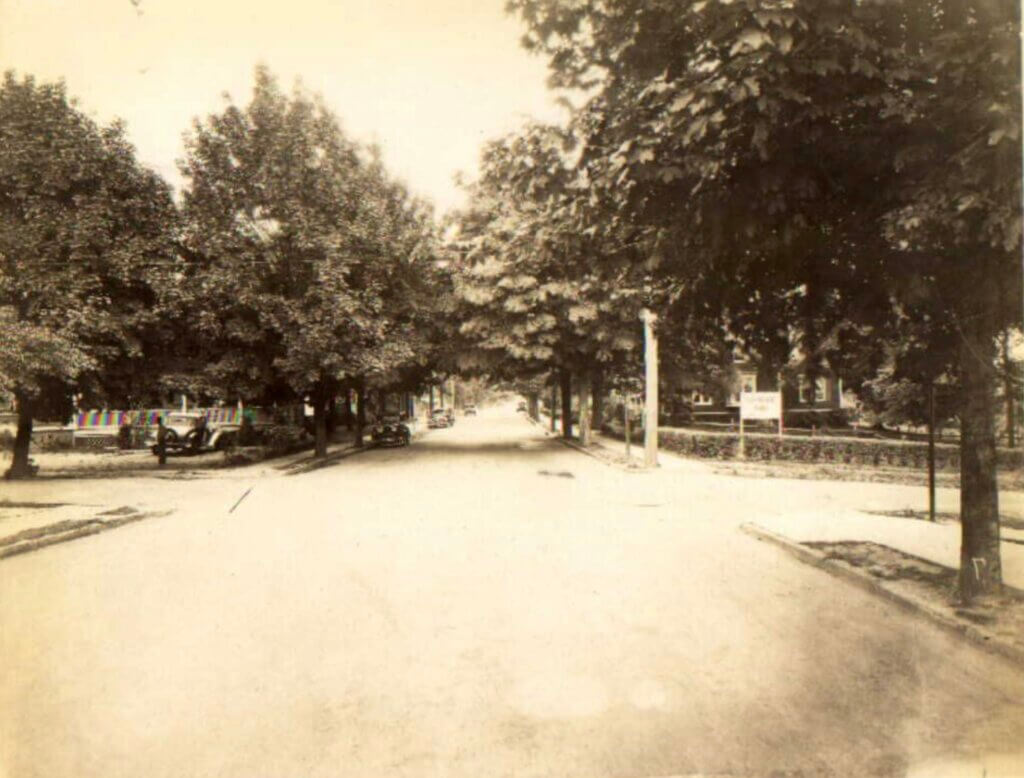
The Ivanhoe Declines
After World War II, the Ivanhoe entered a long decline, occasionally rebranding itself as the Ivanhoe Inn. Classified ads offered furnished rooms with kitchen privileges. Many tenants were White Russians resettled in the U.S. by the Tolstoy Foundation and Farm in Valley Cottage.
Fires hastened the building’s deterioration. In 1940, firefighters trained five hoses on a blaze that consumed the top floor and attic, causing serious water damage to the rooms below.
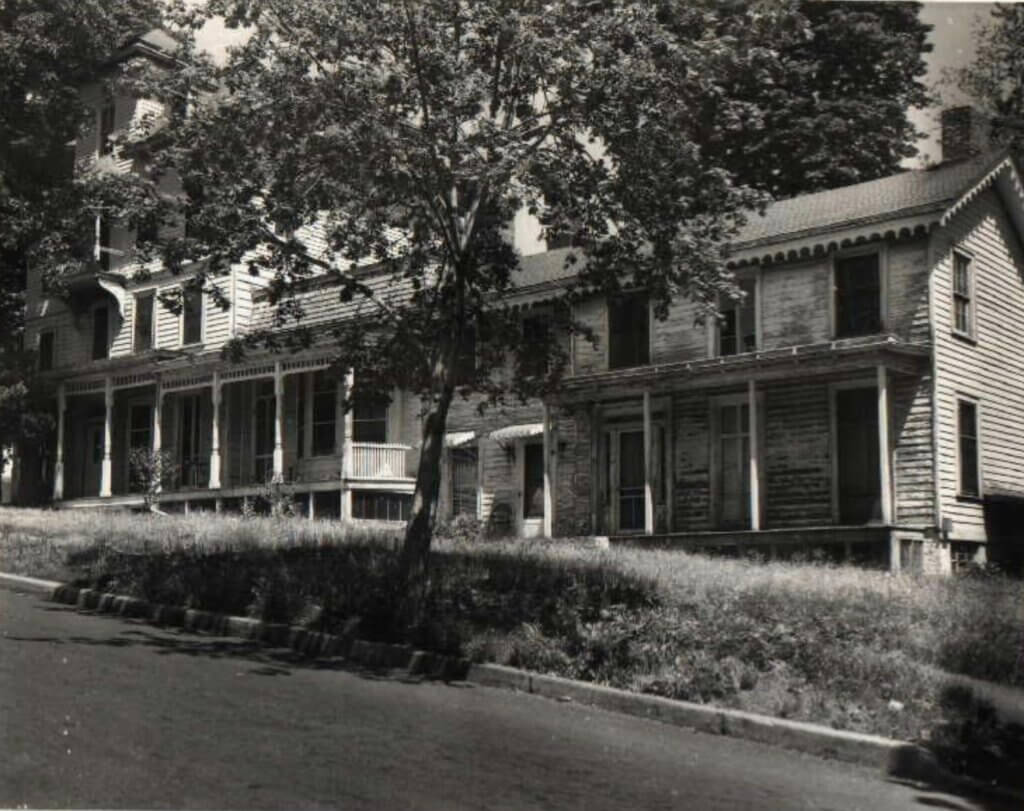
A New Apartment Building
Around 1960, apartment buildings began springing up in and around Nyack. Warren Hills on Mountainview Avenue opened with 190 units in 1959, and Haven Court soon added 21 more. Similar projects were proposed for Rivercrest and West Shore Towers on Gedney Street along the Hudson.
The Planning Board, feeling “under pressure from both sides,” warned that its decision “would determine the character of the village for a long, long time.” Most proposals, including the Ivanhoe, were ultimately approved.
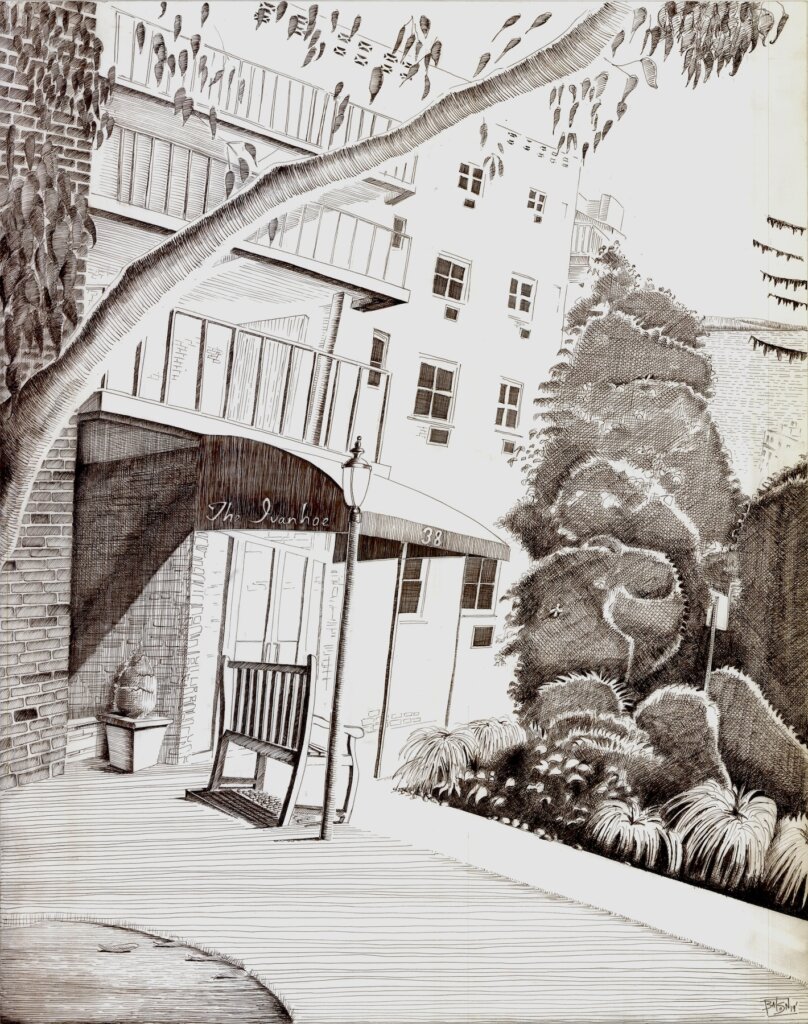
In 1962, developer Samuel Eidelberg presented a plan to replace the aging Ivanhoe boarding house with a new 45-unit apartment building. Each unit featured air conditioning, built-in ovens, and ample parking — modern conveniences that reflected Nyack’s postwar housing boom, when affordable rentals were in high demand.
That August, demolition crews took down the old Ivanhoe. Rising in its place, the new brick apartment building carried its name forward. The developer chose to retain the historic name — and it still graces the building today.
Like its literary namesake, the Ivanhoe embodies both nostalgia and reinvention — a reminder that Nyack’s past continues to live in its names.
Mike Hays lived in the Nyacks for 38-years. He worked for McGraw-Hill Education in New York City for many years. Hays serves as President of the Historical Society of the Nyacks, Vice-President of the Edward Hopper House Museum & Study Center, and Upper Nyack Historian. Married to Bernie Richey, he enjoys cycling and winters in Florida. You can follow him on Instagram as UpperNyackMike.
Editor’s note: This article is sponsored by Sun River Health and Ellis Sotheby’s International Realty. Sun River Health is a network of 43 Federally Qualified Health Centers (FQHCs) providing primary, dental, pediatric, OB-GYN, and behavioral health care to over 245,000 patients annually. Ellis Sotheby’s International Realty is the lower Hudson Valley’s Leader in Luxury. Located in the charming Hudson River village of Nyack, approximately 22 miles from New York City. Our agents are passionate about listing and selling extraordinary properties in the Lower Hudson Valley, including Rockland and Orange Counties, New York.


